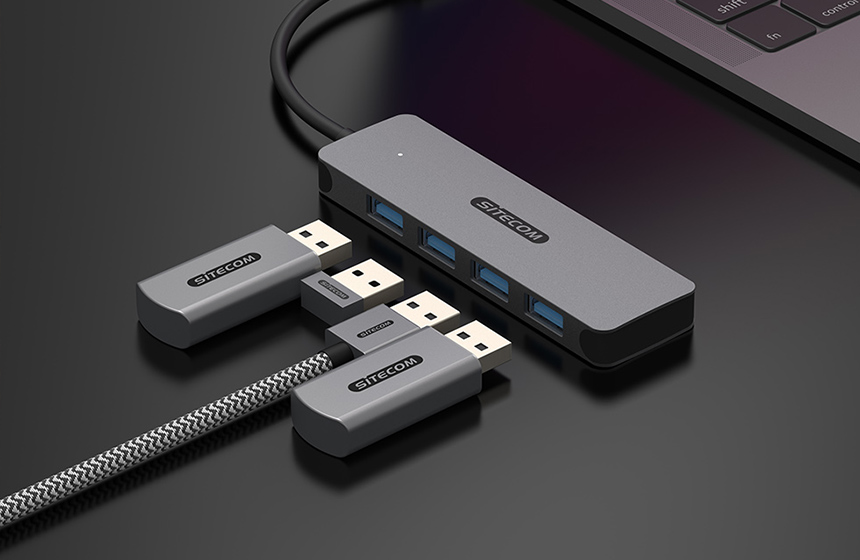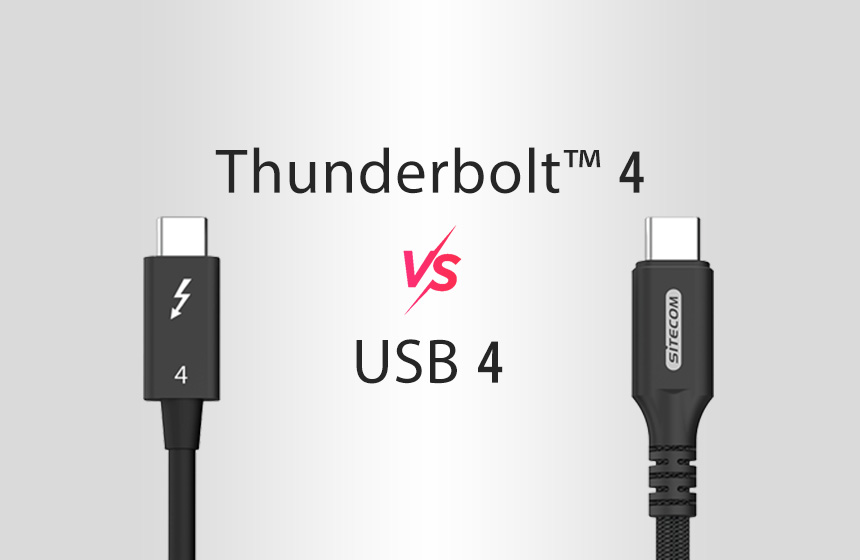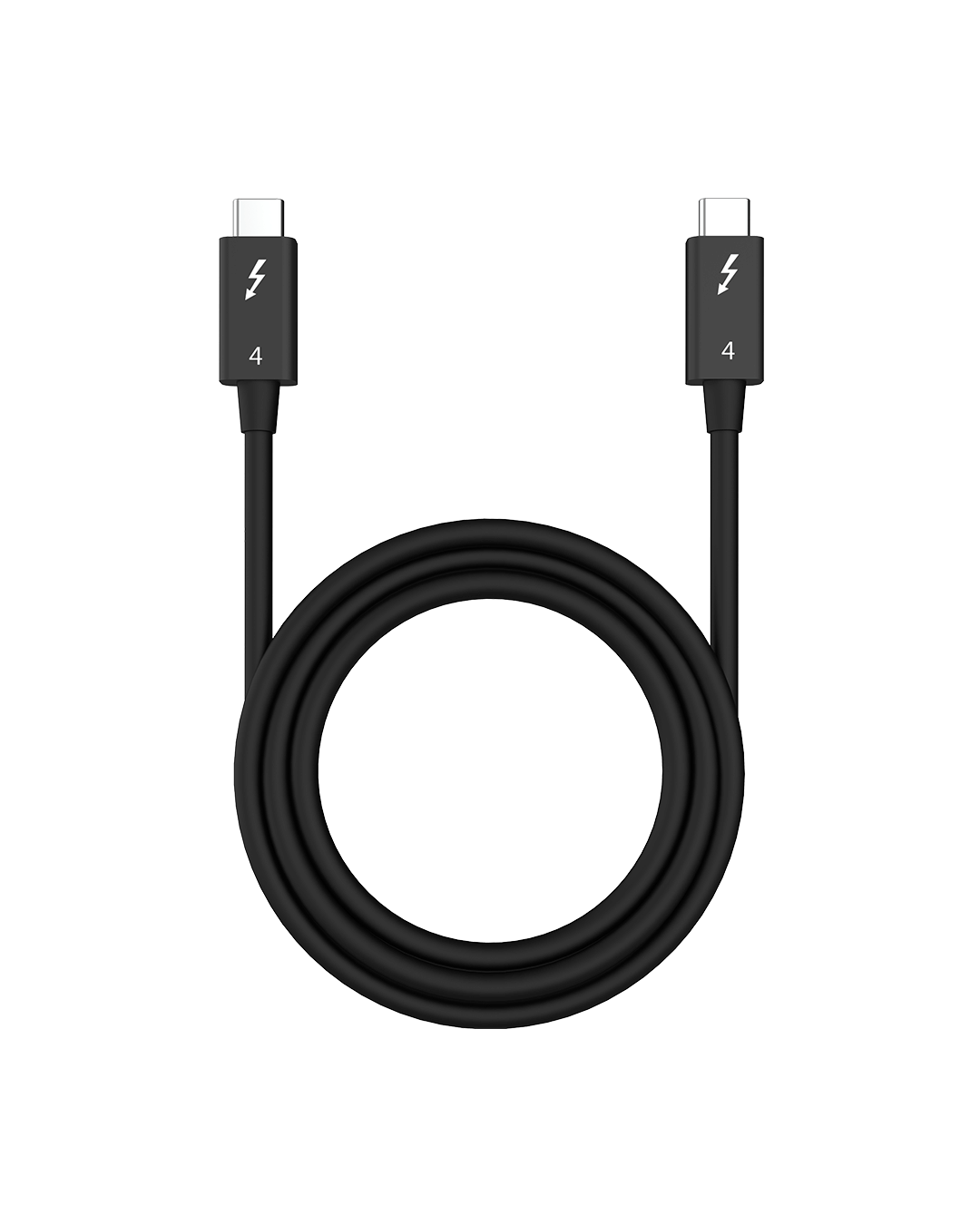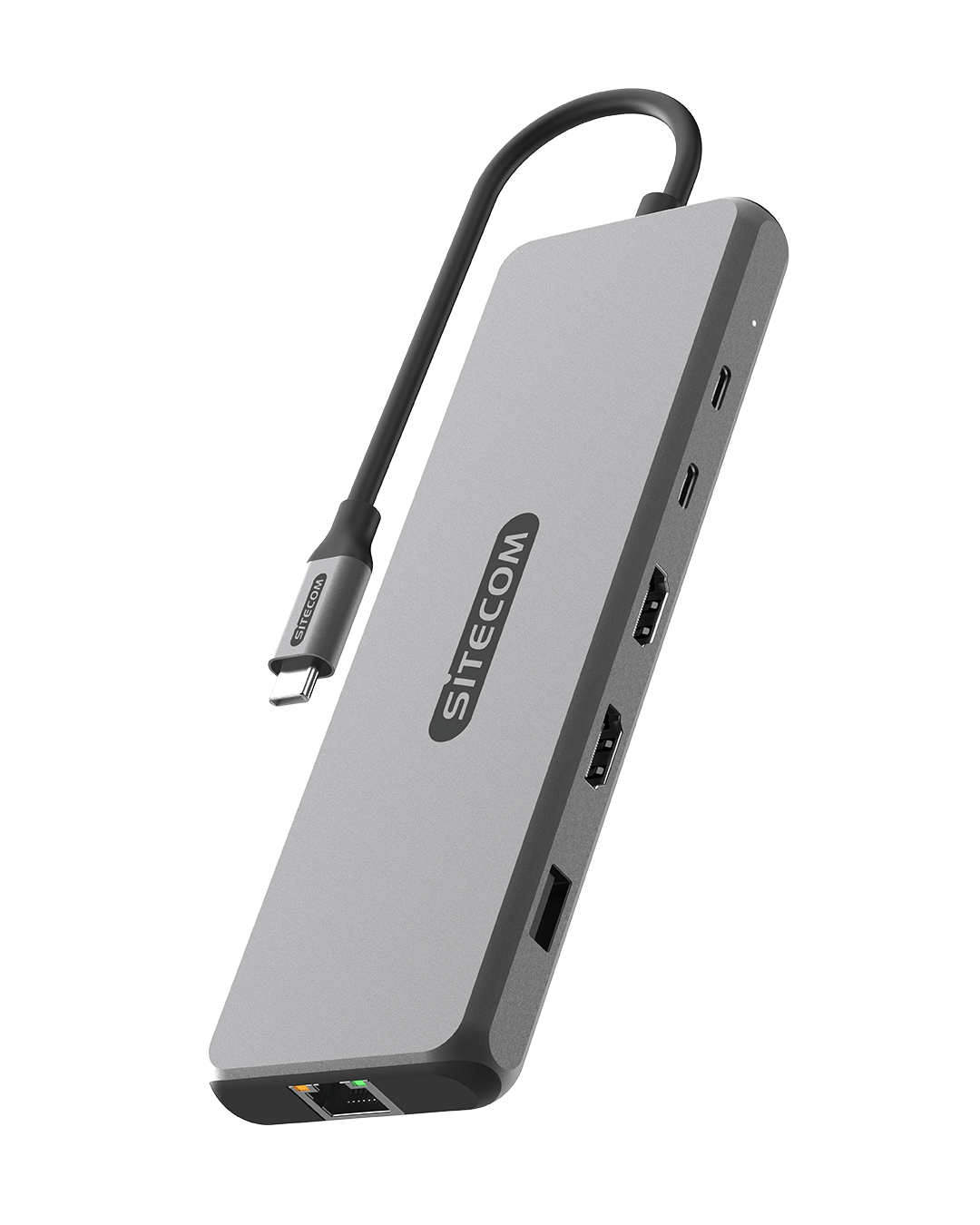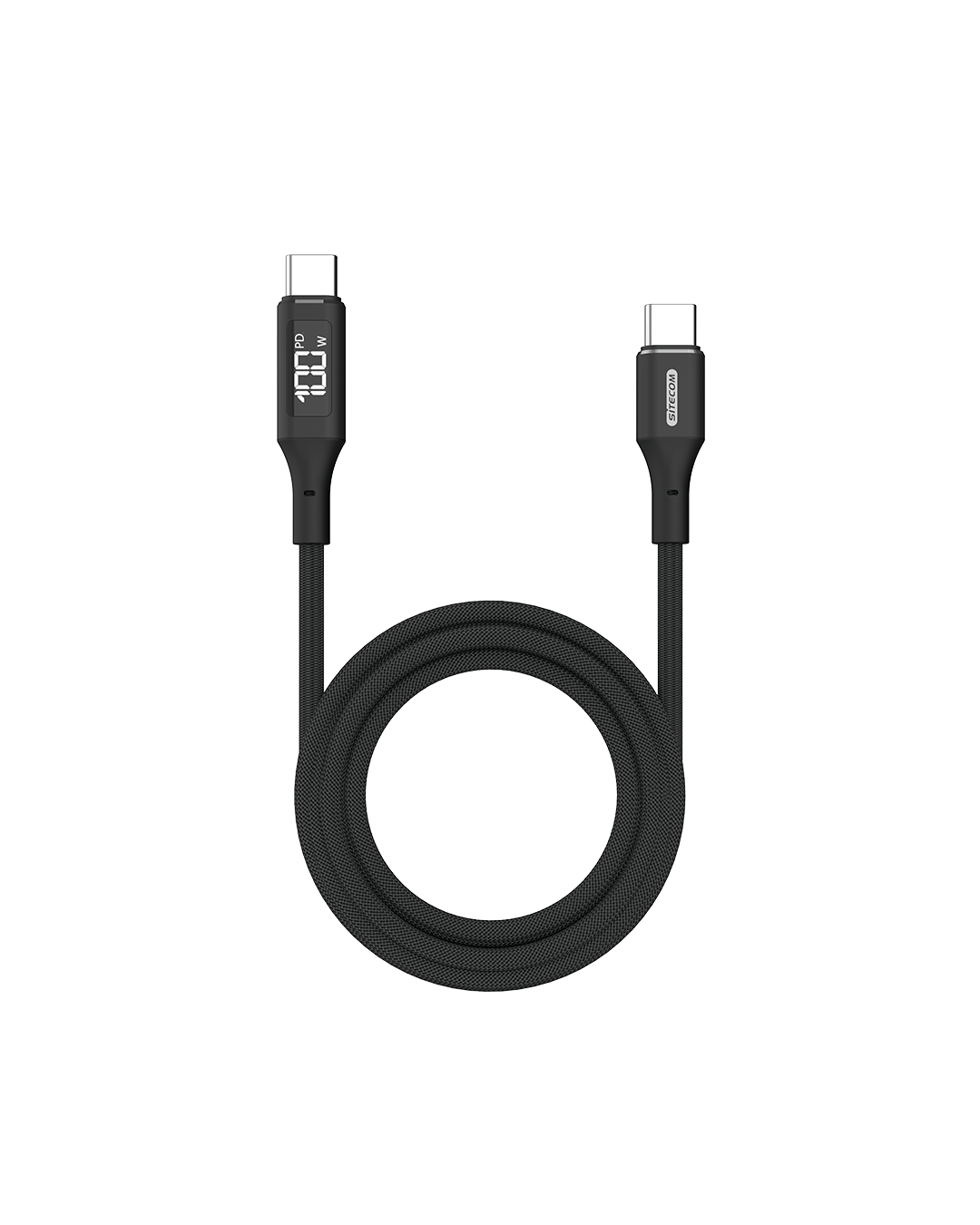Related articles
Tags
Related products
Thunderbolt 4.0 vs. USB 4.0: Exploring the Differences
When it comes to choosing the right cables and devices for your Thunderbolt or USB-C enabled devices, understanding the differences between USB 4.0 and Thunderbolt 4.0 is essential.
Last updated: June 30th, 2023
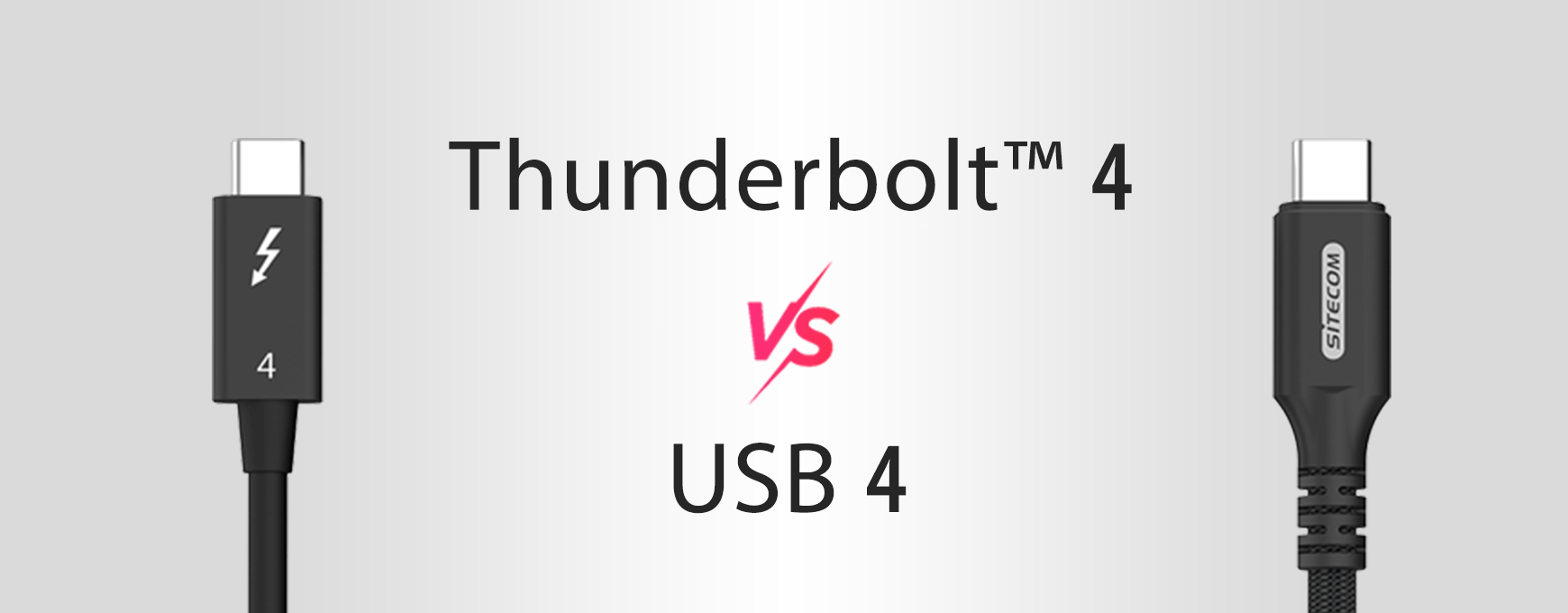
These technologies offer backward compatibility, future-proofing your investments. In this article, we'll break down the features of both USB 4.0 and Thunderbolt 4.0, highlighting their similarities and differences, so you can make an informed decision.
What is Thunderbolt 4.0?
Thunderbolt 4.0, the latest version in the Thunderbolt line by Intel, offers a range of benefits. It is backward compatible with USB Type-C and Thunderbolt 3.0, ensuring compatibility with a wide range of devices. Thunderbolt 4.0-certified cables can work with USB 2.0, USB 3.1, USB 3.2, and USB 4.0, making them versatile and future-proof.
Key Features of Thunderbolt 4.0:
- Data transfer speed of 40 GB/s
- 100-watt Power Delivery (PD) with fast charging capability
- Supports USB Type-C monitors with resolutions up to 8K
- Provides PCIe at 32 GB/s for high-speed data storage
- Supports docks with up to 4 ports
- Allows waking up laptops/computers with connected Thunderbolt 4.0 docks
- Offers Intel VT-d DMA (Direct Memory Access) protection against physical DMA attacks
What is USB 4.0?
USB 4.0 is the latest specification within the USB line, housed within USB Type-C cables. It succeeds USB 3.2 and 3.0, offering data transfer speeds of either 40 GB/s or 20 GB/s. Like Thunderbolt 4.0, USB 4.0 uses the same reversible and rounded USB Type-C connector, ensuring compatibility.
Key Features of USB 4.0
- Data transfer speeds of up to 40 GB/s or 20 GB/s
- Dynamic bandwidth allocation for connected monitors/displays
- Backward compatibility with Thunderbolt 3.0, USB 2.0, USB 3.0, USB 3.1, and USB 3.2
- Efficient use of bandwidth, allowing simultaneous data transfer and display capabilities
Differences Between USB 4.0 and Thunderbolt 4.0
- Thunderbolt 4.0 cables are also USB 4.0 cables, but not all USB 4.0 cables are Thunderbolt 4.0 certified.
- Thunderbolt 4.0 offers a maximum bandwidth of 40 GB/s, while USB 4.0 can offer either 40 GB/s or 20 GB/s depending on the cable.
- Thunderbolt 4.0 supports connecting two 4K displays, while USB 4.0 supports connecting a single 4K display.
- Thunderbolt 4.0 is more powerful and offers more consistent specifications across devices, while USB 4.0 devices may vary in terms of quality and capabilities.
- Thunderbolt 4.0 is commonly found in Apple devices, whereas USB 4.0 is more widely available and used in various devices.
Compatibility with Apple Devices
Thunderbolt 4.0 Support:
- MacBook Pro 16-inch (2021 Model)
- MacBook Pro 14-inch (2021 Model)
USB 4.0 Support:
- Mac mini M1 (2020 Model)
- MacBook Air M1 (2020 Model)
- MacBook Pro 13-inch M1 (2020 Model)
- iMac 24-inch M1 (2021 Model)
Conclusion
Understanding the differences between USB 4.0 and Thunderbolt 4.0 is crucial when choosing cables and devices for your Thunderbolt or USB-C enabled devices. While both offer backward compatibility and future-proofing, Thunderbolt 4.0 provides more consistent specifications and capabilities. USB 4.0, on the other hand, is more widely available and offers various speeds depending on the cable. Consider your specific needs and compatibility requirements to make the best choice for your devices.
Related products

